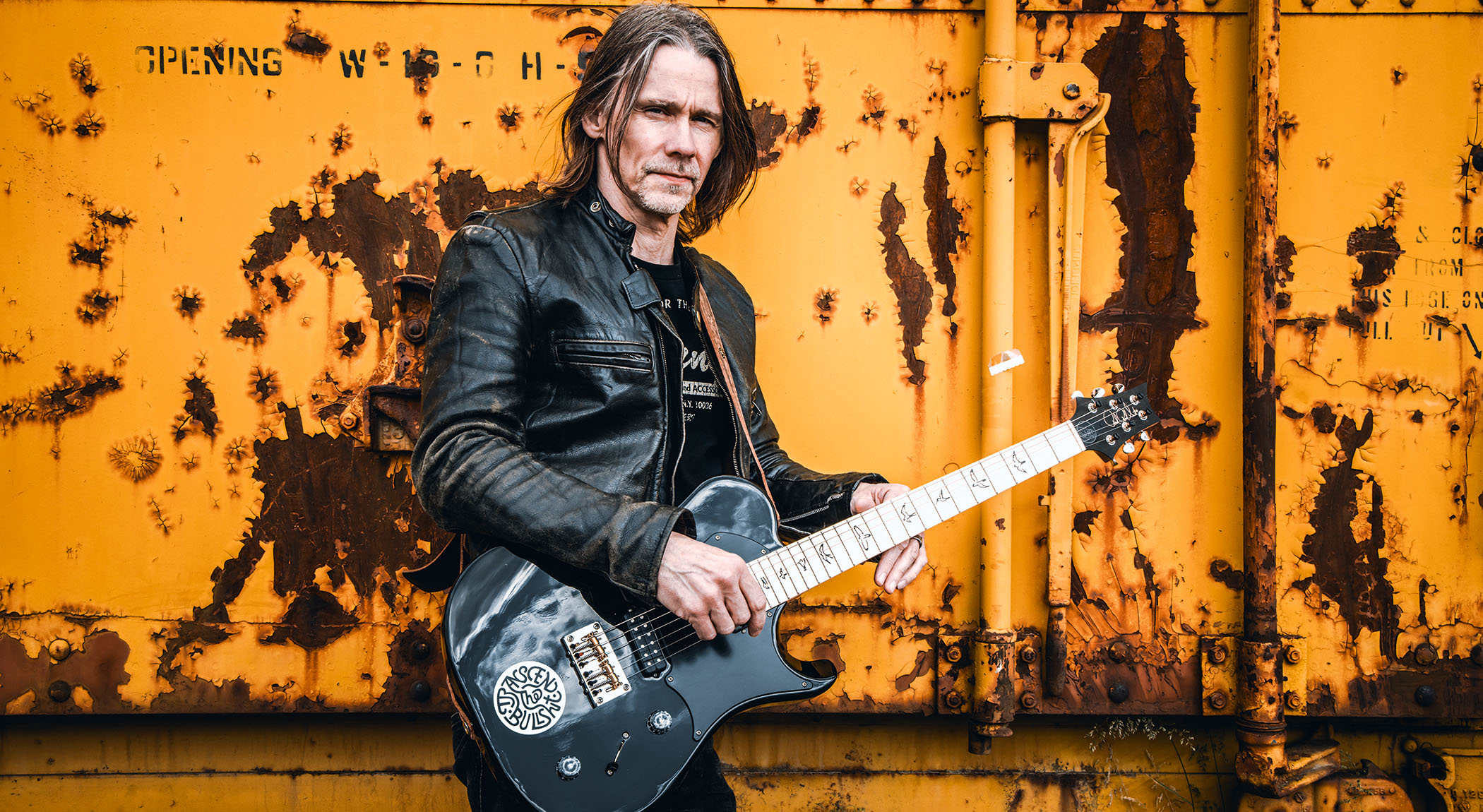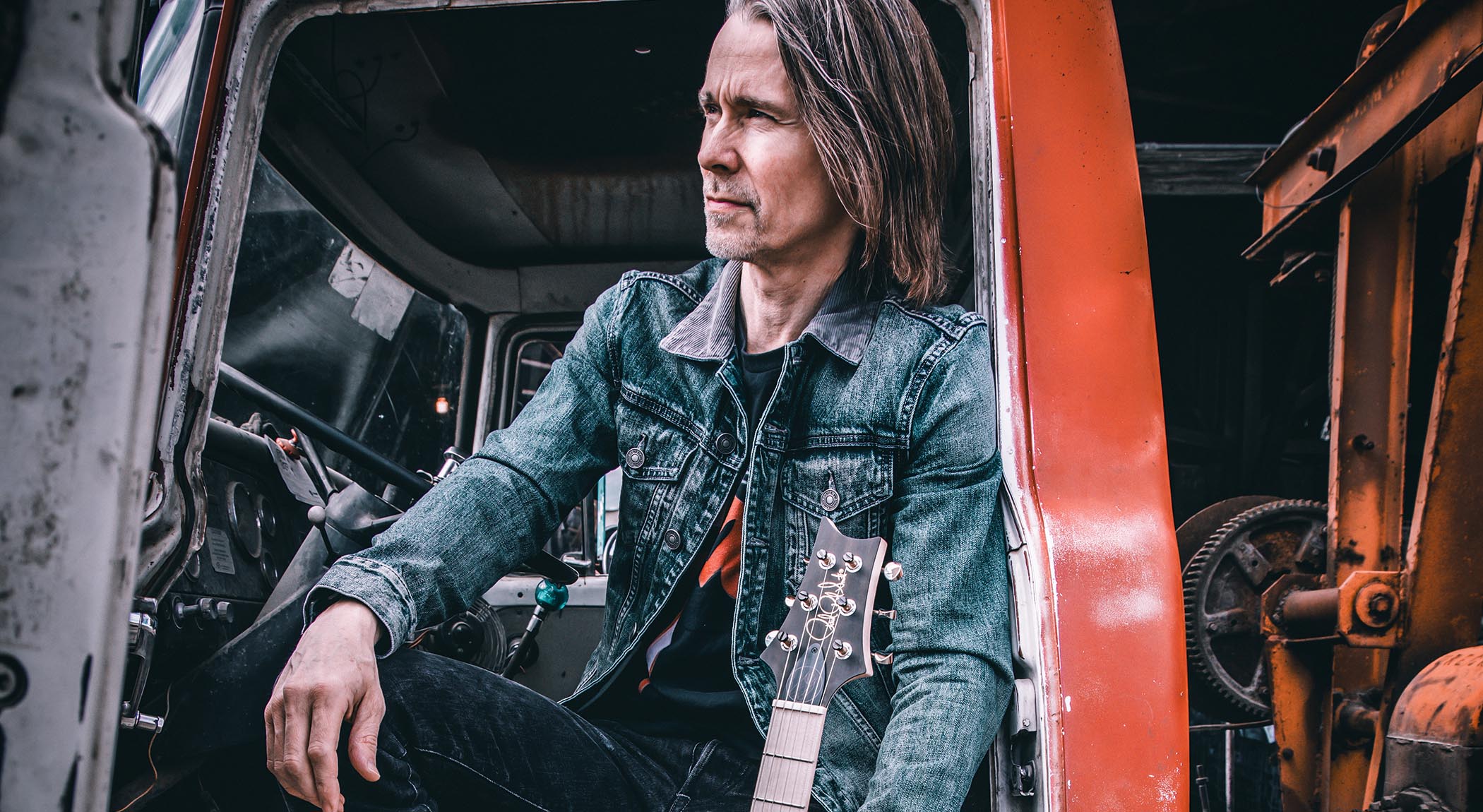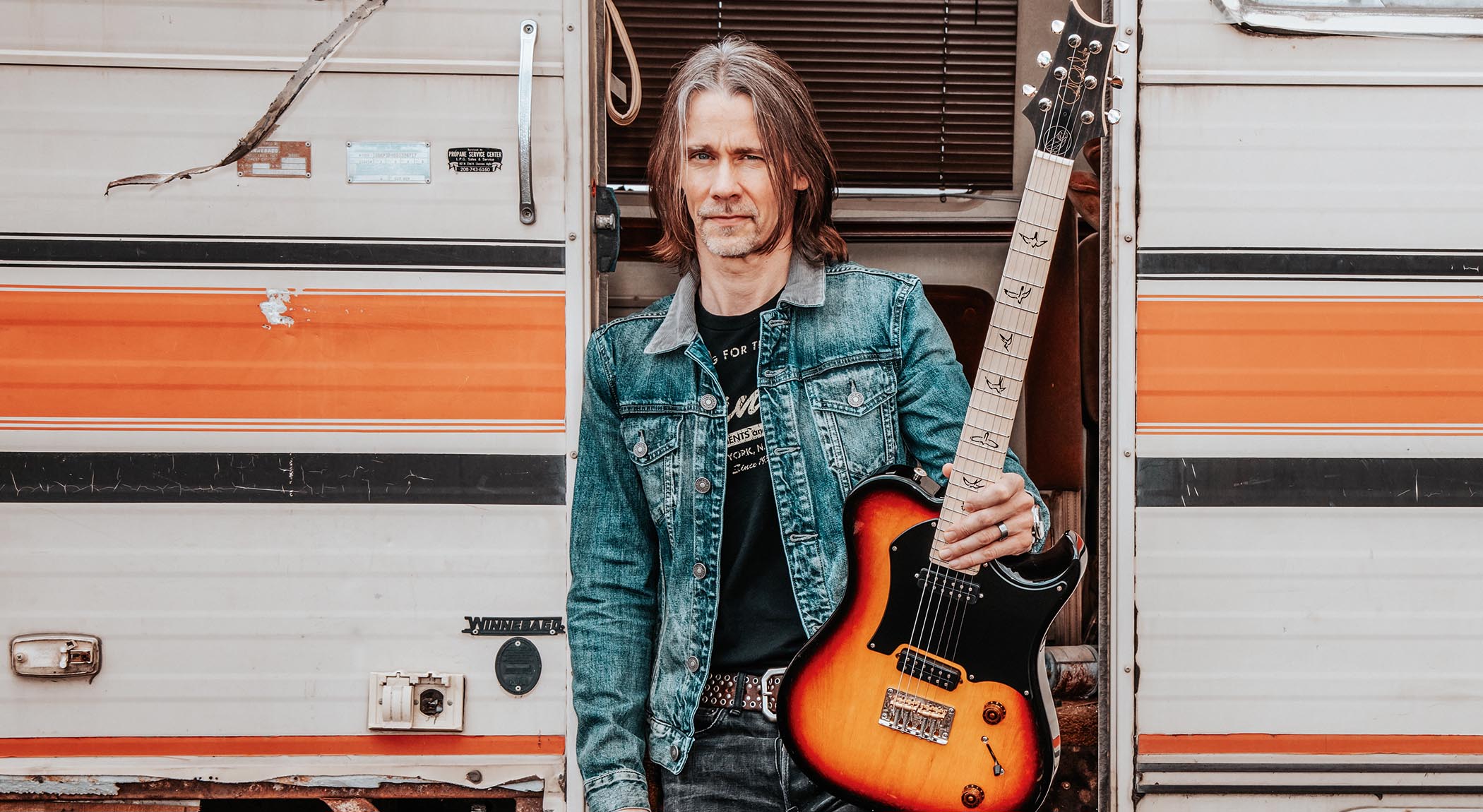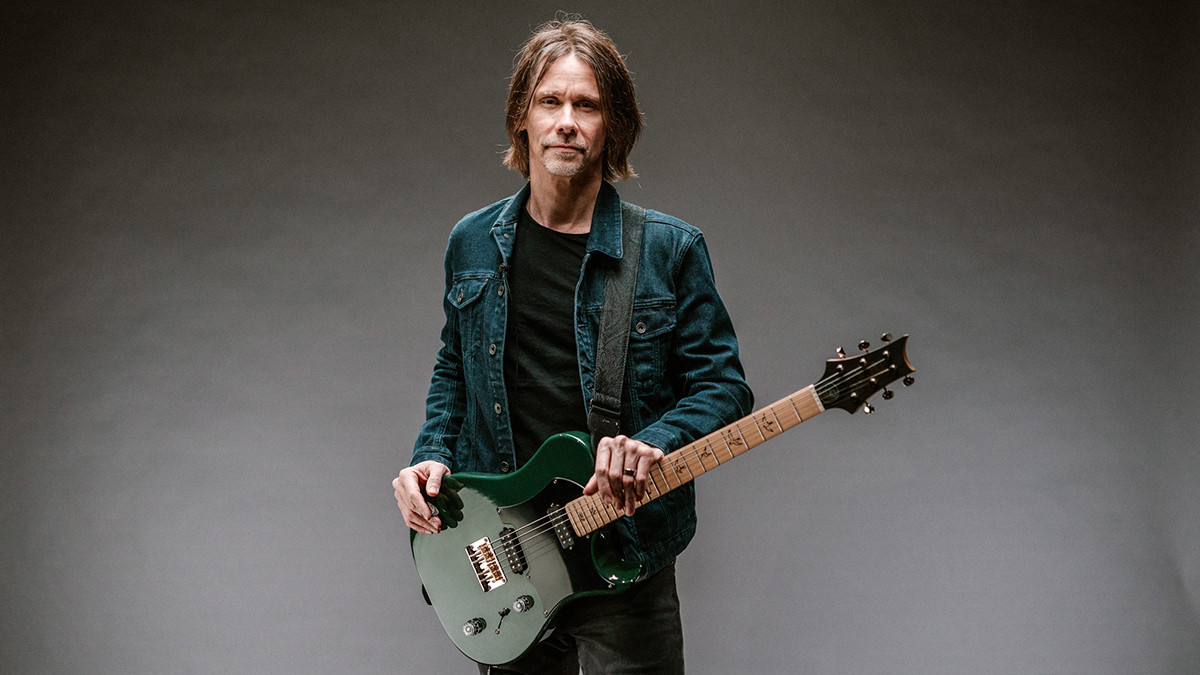
“I’ve been so fortunate with my career,” Myles Kennedy says, and indeed, between fronting Slash featuring Myles Kennedy and the Conspirators, and singing and playing guitar alongside Mark Tremonti in Alter Bridge, Kennedy is, to borrow a Conspirators album title, living the dream.
But even while having his hands full with two projects, he continues, “As a writer, I can never totally power down. I always have the antenna up in case something comes along.” He laughs. “It’s like being a doctor on call.”
If that’s the case, then Kennedy has been one busy MD. The Conspirators recently wrapped touring for their most recent album, 4, and before that, Kennedy was on the road with Alter Bridge in support of their seventh effort, Pawns & Kings. Somewhere in between, he managed to write and record a solo album, the just-released The Art of Letting Go.
The new effort is Kennedy’s third under his own name, following 2018’s Year of the Tiger and 2021’s The Ides of March, and in addition to showcasing the sort of anthemic, hooky and intensely melodic heavy modern rock that has become his calling card, The Art of Letting Go is also his most unabashedly hard-hitting effort to date.
“The intention this time out was definitely to make a riff-based rock record, and to not be afraid of doing that,” Kennedy says.
“Whereas I think with the first two records I shied away from it because I was coming from two different projects that were already steeped in that sound.” When it came to The Art of Letting Go, however, Kennedy asked himself, “‘Why can’t I do that? Why am I setting up these parameters?’ I’m known as a rock singer and guitar player, so why wouldn’t I do that?”
Kennedy does it to great effect throughout The Art of Letting Go, from the first crashing chords of the opening title track through the epic closer, How the Story Ends.
In between there’s plenty of raging hard rock (the hard-charging first single, Say What You Will, and the grungy and groovy Saving Face) and big-gesture anthems (the disarmingly major-key Mr. Downside, the soaring Miss You When You’re Gone), as well as mournful ballads (Eternal Lullaby) and multifaceted, almost proggy workouts (Behind the Veil).
And it’s all shot through with Kennedy’s instantly recognizable vocals and, perhaps surprising to some who see him solely as a frontman, incredibly fluid and accomplished lead guitar playing.
For Kennedy, however, the guitar component has always been central to his musical makeup.
“From the time I was young I just wanted to just play guitar – I never expected to be known as a singer,” he says.
“The only reason I became a singer was because I couldn’t find someone to sing the songs I was writing. I was like, ‘I think I’m gonna have to learn to do this myself.’ So what’s beautiful about having this project is that it helps fulfill my original plan: ‘OK, I’m writing songs. I’m singing. But I also get to play a lot of guitar.’”
He laughs. “Someone once said to me, ‘Why do you make solo records?’ And it’s like, ‘So I can play solos!’”
You’ve been busy these last few years with Slash and Alter Bridge. How did this record come together?
“It was one of those things where I knew I had a record coming up and I had a very finite window to write it in. So beginning in January of last year, I just started chipping away.
“I think I was out with Alter Bridge, so it was a lot of writing in hotel rooms and dressing rooms and trying to just get as much out as I could within about a six-month period of time, before we started rehearsals and pre-production and all that stuff. So the album was definitely a road-written endeavor this time around.”

Is there a balance you have to strike when you’re working in a creative realm, but also again a very strict deadline?
“It can be a challenge if you’re not careful. Because you can end up doing something just because you have to do it, and you have to finish it. Fortunately for me, I was always the kid who would procrastinate when I had, like, a term paper, right? [Laughs] It was the last week before it was due, but somehow I would land on my feet.
“So sometimes I work better under pressure. But it’s interesting – as I get older, I don’t enjoy the stress of that. So I think I’ve gotten better at structuring my time appropriately and knowing what’s coming up, and then still allowing myself to be open to the process.”
As you were putting these songs together, did any theme start to reveal itself to you?
“You know, subject-matter wise, this is the first one of my solo records that really doesn’t have a storyline. Year of the Tiger was written about things I’d experienced as a child and with my family, and then The Ides of March was very much influenced by everything that was going on in the world at that time. So there was an arc of a narrative. This time I really just wanted it to be a collection of songs. I didn’t want to do another concept record.”
Any time I had a riff that was getting a little ‘metallic,’ I’d say, 'Okay, we’re gonna save that for something else.' I wanted these songs to stay kind of slinky and bluesy
On the music side there seems to have been at least one concept: to rock hard.
“Yes, and it was a little bit liberating in that respect. But what I also wanted to be very conscious of was that I wanted it to be riff-based and I wanted it to rock, but I also wanted to still have that bluesy element and not go into… almost where Alter Bridge can go, where there are those tinges of metal at times.
“So any time I had a riff that was getting a little ‘metallic,’ I’d say, 'Okay, we’re gonna save that for something else.' I wanted these songs to stay kind of slinky and bluesy, and have that as the basis.
“Another thing was, it was important to keep it so that we could play it as a three-piece [Kennedy’s band includes drummer Zia Uddin and bassist Tim Tournier]. What I learned touring on those first two records is that we’d end up having to rearrange everything from what was done in the studio because I was layering all these parts, playing lap steel and this, that and the other. This time, it was about making it so we could pull it off live the way it was recorded.”
To that point, on your previous record you used a wide variety of guitars and amps in the studio. What was your setup this time?
“Well, like I was saying, I tried to keep it really simple so that it was something that could be recreated live. So it’s the signature guitar [the PRS Myles Kennedy], strung with some D’Addario .10’s. And then a Diezel Paul amp that [Diezel co-founder] Peter Stapfer had given me a few years ago for the Year of the Tiger tour.
“It’s a 45-watt amp, and it’s not like the Herbert or the VH4. It’s a very different animal. There’s just something about that amp and that guitar together that I really love. And then I had the [J. Rockett] Chicken Soup pedal, which I’ve used now for a few years, and a pedal called the [Mythos] Argo, which is a great fuzz pedal. That’s what you hear at the beginning of Say What You Will.”

Guitar-wise, was your PRS signature guitar able to handle the variety of tones – clean, dirty, overdriven, lead – that you needed for the record?
“Yes. And you know, it was a lot of fun last time getting to make a record with all those wonderful vintage instruments. But for this record, I really wanted it to be streamlined and not spend a bunch of time getting tones.
“We knew what we wanted, and once we got the tone we didn’t need to constantly stop and start and move microphones, turn up the mids, turn down the bass… it was just there. Every day I’d plug into the same guitar and the same amp and we were off the races.”
One highlight is the title track, where you go for some unique phrasings and note choices.
“That turned out to be one of my favorites, because when it goes from the bridge into the solo section, it’s like the clouds kind of part. It’s a different vibe and it’s very… if I’m not mistaken, I think it’s pretty ‘Dorian,’ if I’m thinking like a music nerd. [Laughs] I love that sound.”
Another standout is Dead to Rights.
“That is definitely a tip of the hat to [Big Wreck singer and guitarist] Ian Thornley. I texted him while we were recording: ‘This is a tribute to you, brother.’ We became friends, geez, 25 years ago, and I just think the world of that guy.
“The riff, I would attribute that to playing with him a lot back in the day. And the solo as well. There’s certain licks in there where I’m like, ‘I definitely got that one from Ian…’”
I love guys like Warren Haynes. A lot of the way I think as a guitarist comes from that school of playing
Who would be another big guitar inspiration for you?
“I love guys like Warren Haynes. A lot of the way I think as a guitarist comes from that school of playing. I don’t normally go into a solo going, ‘I want to play like this.’ I just do what I do. But when I think of the language that I speak a lot of times, and who taught me that language, it would be players like Warren.
“And the thing I like about Warren is that the way he plays guitar is kind of like how he sings. That’s what I’ve always tried to do. Someone actually once said to me, ‘When you play guitar it reminds me of how you sing.’ And I was like, ‘Wow, thank you!’ Because that’s what I’m trying to do – vocalize through the instrument.”

Given that, at this point in your career would you say you identify more as a singer or a guitarist? For instance, bilingual people often talk about dreaming only in their native language. Which is it for you?
“It’s always been about the guitar. I had a tech who, at the bottom of his emails, it said, ‘The power of the riff compels me.’ I always thought that was so great. Because that’s how I feel; it all starts with the riff. That’s the foundation. And then the chord progression and the melody and the vocal come after.
“With this record especially, which is more of a riff-based thing, the riffs needed to be strong enough to build the foundation on. Because that’s where it all starts. So, yeah, I guess when I dream, I dream as a guitar player. [Laughs]”
- The Art of Letting Go is out now via Napalm.







